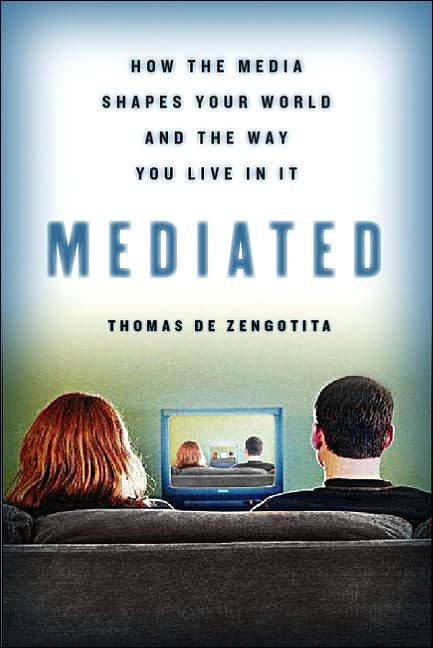Tuesday, March 18, 2008
on hype and cloud computing
The term “cloud computing” has gotten a lot of shine lately. Forbes blows the security issue out of proportion; the majority of files stored on services such as Amazon S3 are not critical. Documents are passed every day over email, the most popular and among the most insecure of all applications on the web, which also uses a client-server model. It’s also hardly a new idea - distributed computing, where multiple machines share resources, has been around since the 60s. Sharing resources of a central mainframe computer from a remote terminal used to be the ubiquitous interface. This is an issue that has always been present in computing models, if not always visible to consumers on the web. In the short term I can see cloud computer and related client-server relationships taking the strain off of devices that cannot handle full-fledged versions due to hardware restrictions (interface, processor speed, memory). This may very well spur a new wave of innovation in hand-held devices. At the same time, there’s a lessening of perceived ownership. This may play well with younger, tech-savvy generations who are used to software and media being free, but may also lead to a nervousness over if their data are "safe" if they don't know exactly where and how it is being stored. It also bears mentioning that the infrastructure of the Internet is also simply not up to the demands of mass scale use of ideas such as cloud computing and streaming of HD quality video to the home. What might be the solution is higher-bandwidth, commons-based wireless networking - still several years away at least for the United States.
Labels: cloud computing distributed computing forbes
Tuesday, March 11, 2008
De Zengotita's "Mediated"
 De Zengotita’s central tenet in “Mediated” is that images and forms the media produce serve primarily to cater to our self-centered nature, here called the “flattered self.” These feed the meaningless, amorphous “blob” of postmodern consumer culture, which serves no purpose in society. As the media becomes more fractured and prevalent, messages and truths become essentially meaningless. One problem with his “blob” concept stems from its primary characteristic: amorphousness. It flexes to encompass all of De Zengotita’s ideas. Ironically, in doing so, the concept of the blob diminishes the bite of his arguments, allowing him leeway to wiggle out of more detailed descriptions of his theories.
De Zengotita’s central tenet in “Mediated” is that images and forms the media produce serve primarily to cater to our self-centered nature, here called the “flattered self.” These feed the meaningless, amorphous “blob” of postmodern consumer culture, which serves no purpose in society. As the media becomes more fractured and prevalent, messages and truths become essentially meaningless. One problem with his “blob” concept stems from its primary characteristic: amorphousness. It flexes to encompass all of De Zengotita’s ideas. Ironically, in doing so, the concept of the blob diminishes the bite of his arguments, allowing him leeway to wiggle out of more detailed descriptions of his theories.He posits that the new power afforded to individuals alters various aspects of our lives, including puberty, politics, and entertainment. People no longer are able to “fill in the blanks” in the lives of their heroes, so heroes naturally become more local and less monolithic. Individuals are afforded god-like modes of power, making the “extraordinary” commonplace. The increased rate and type of interactions become overwhelming to individuals, who find themselves unable to process or deal with them. In reality, I would say this is a straw man argument; people rarely feel overwhelmed by information. What is not useful or required passed quickly through, not remembered and not harmful.
Like many scholars of a certain age, De Zengotita’s is pessimistic about the possibilities of media. One of his many suggestions is that a music concerts now “provide fans with the only experiences of transcendent social belonging most of them will ever know” (given that they are not religious and not “joiners”). It’s a provocative statement – but would he recognize such an event if it he found it? I believe he would be less likely to recognize such an event than other scholars who gives new forms of mass self-expression more credence. On other fronts, he is more convincing - take for instance his examples of interactions between “real” versus artificial through the complex interactions between audience and players in reality television, or the public revelation and cleansing of talk shows.
The “flattered self” and “meworld” cannot fully explain the multitude of interactions and motives encountered in modern life. It’s a difficulty we encounter since the rise of mass media, where the media are inexorable from its audience and participants. On the dust jacket, Norman Mailer praises the book, saying “there are anywhere from three to ten stimulating ideas on each page.” Indeed, De Zengotita’s ideas are poignant, and excuse his occasional overreaching or unconvincing example. (still, using one’s own children is an example of the latter… “weak tea” as a professor of mine frequently said)
The idea of the “flattered self” is an entirely appropriate metaphor for the current age. This basic concept is primarily what makes this book a provocative read. At one point, this was its title. If this remained as the title, the focus refined, and its arguments condensed, “Mediated” would be a true classic. Unfortunately, it’s not quite at the level of Neil Postman, although one can detect a few strokes of his felt-tipped pen in De Zengotita’s carefully considered arguments.
Labels: blob, de zengotita, mass media, mediation
